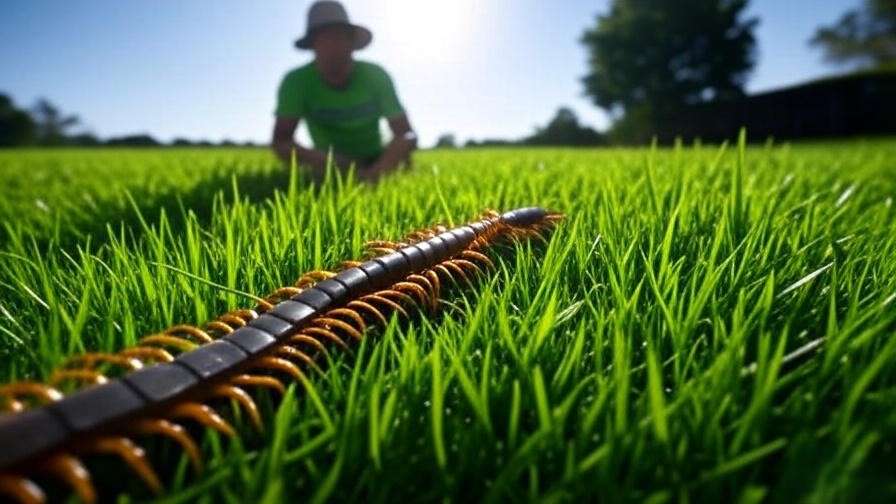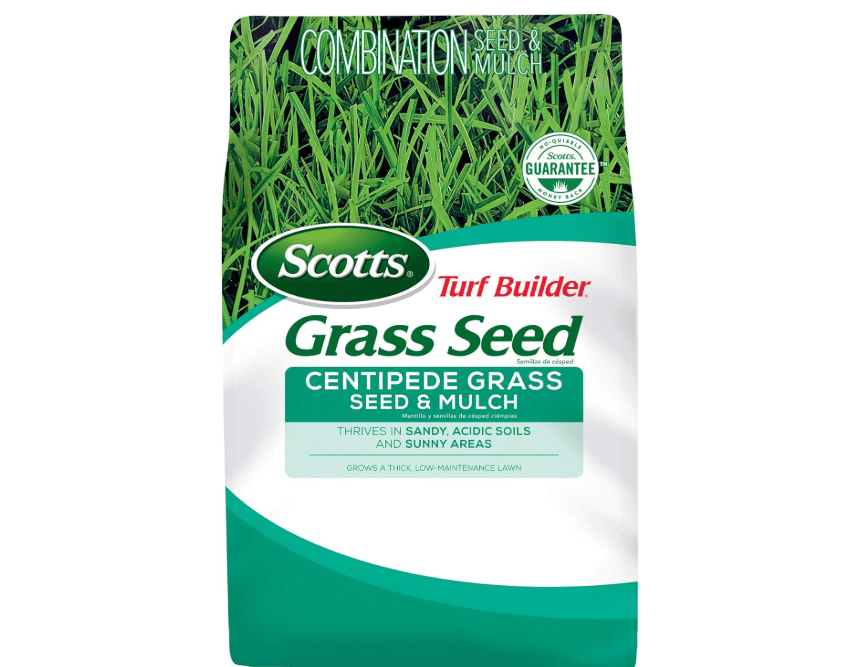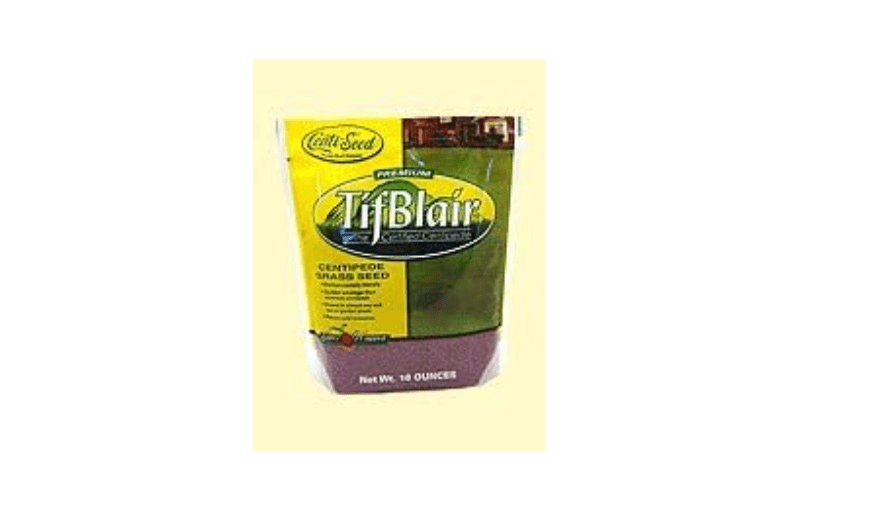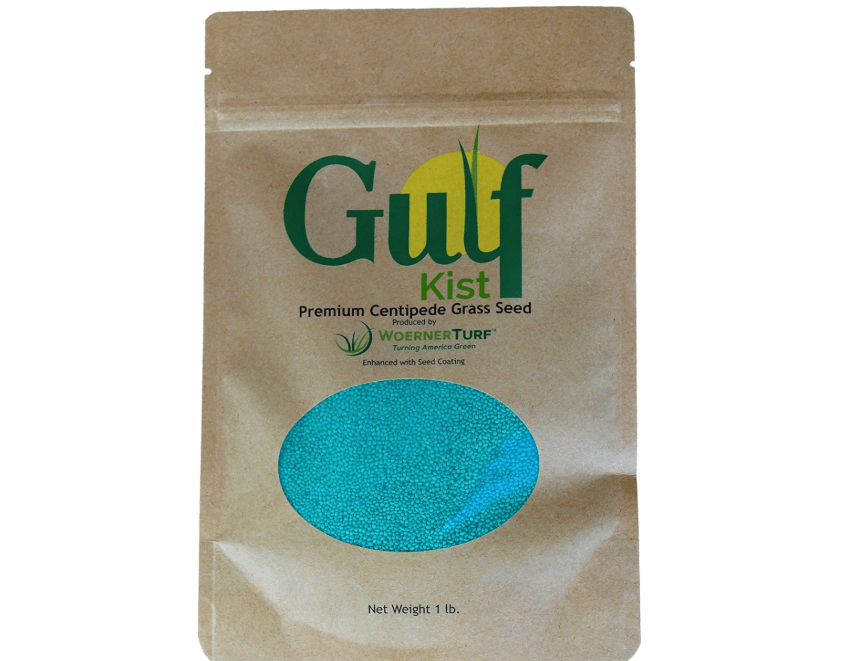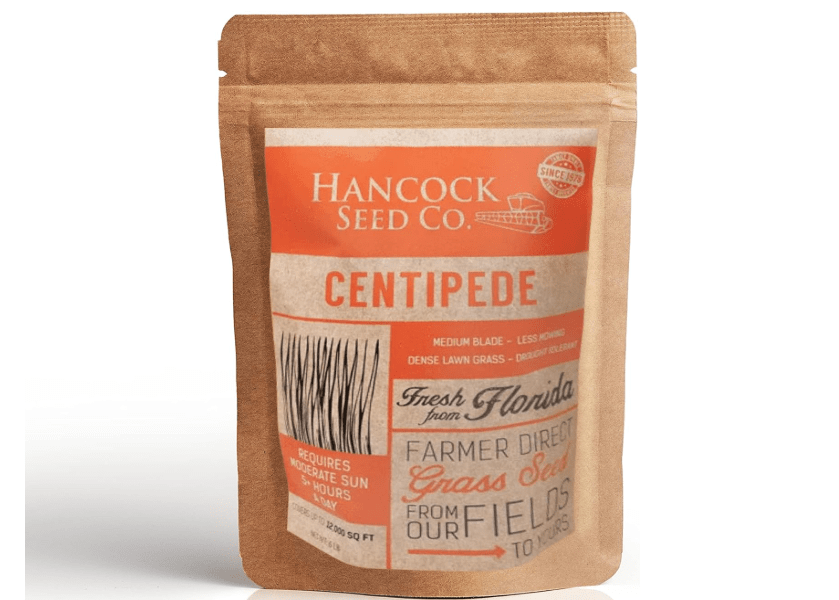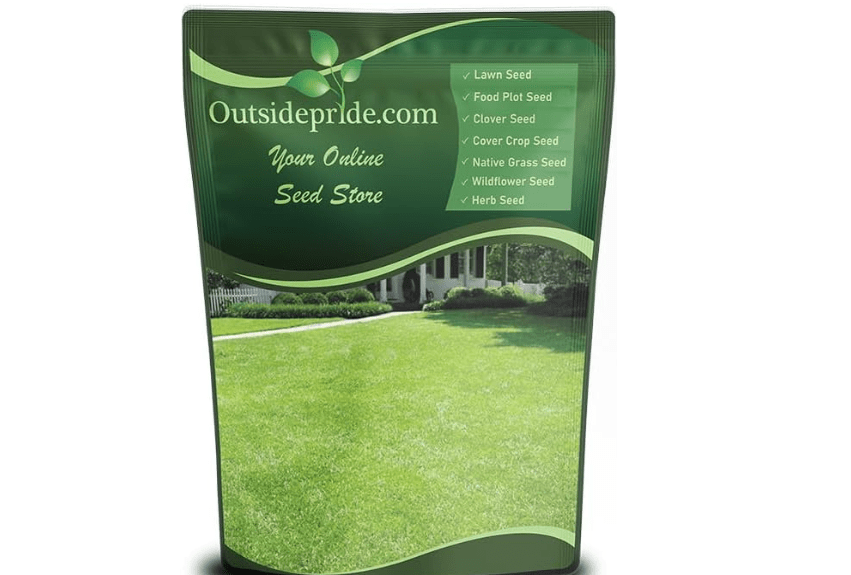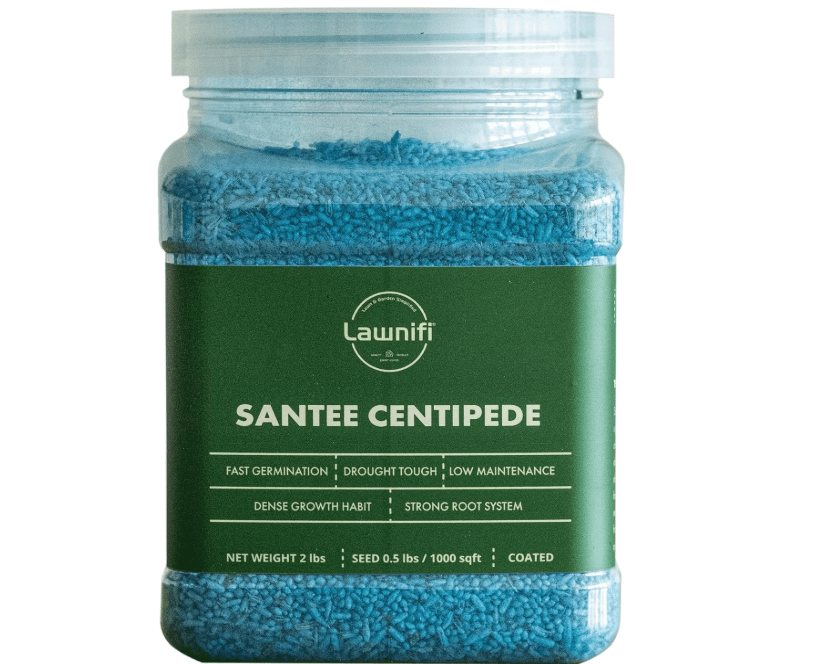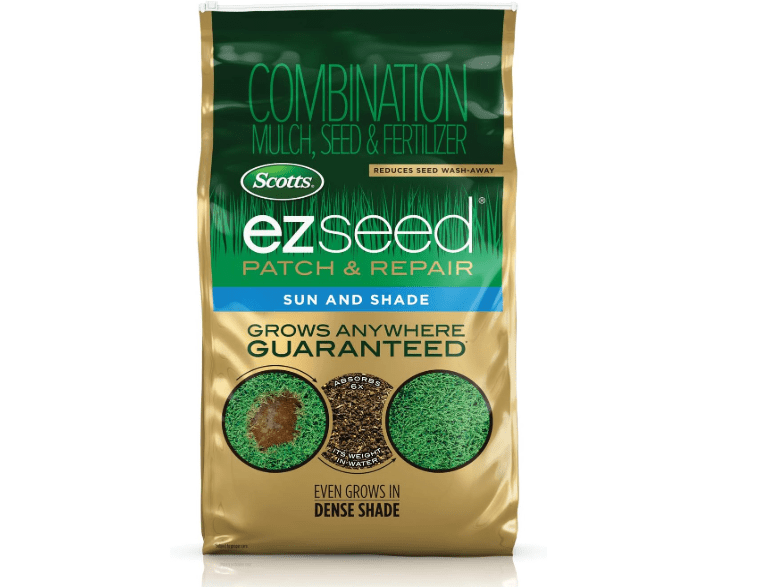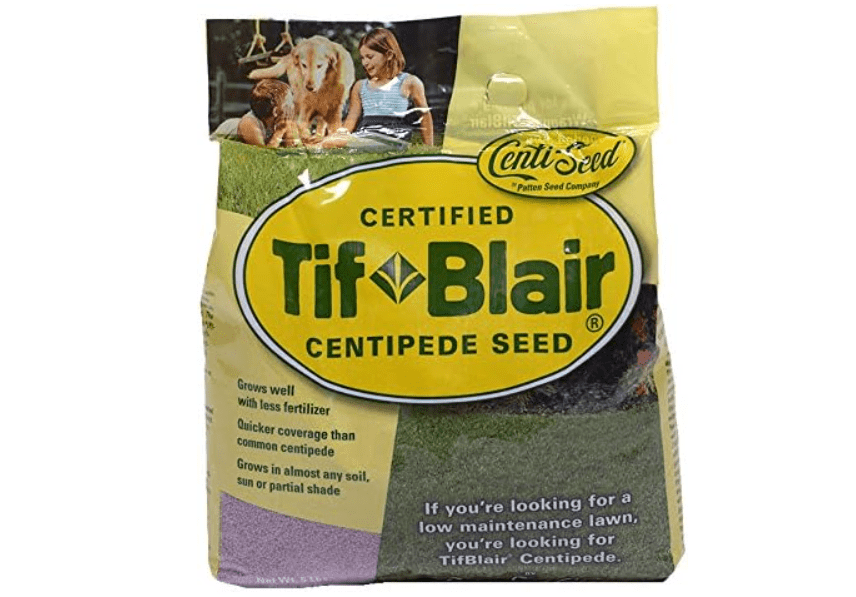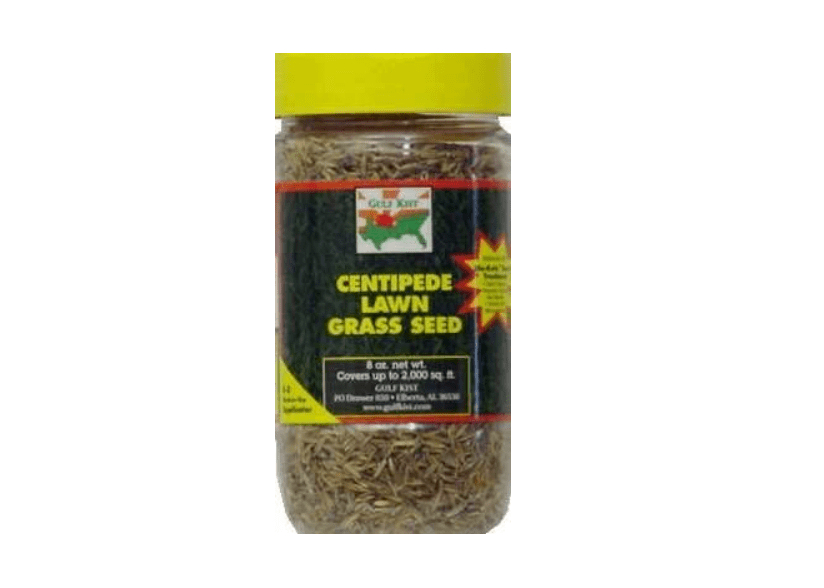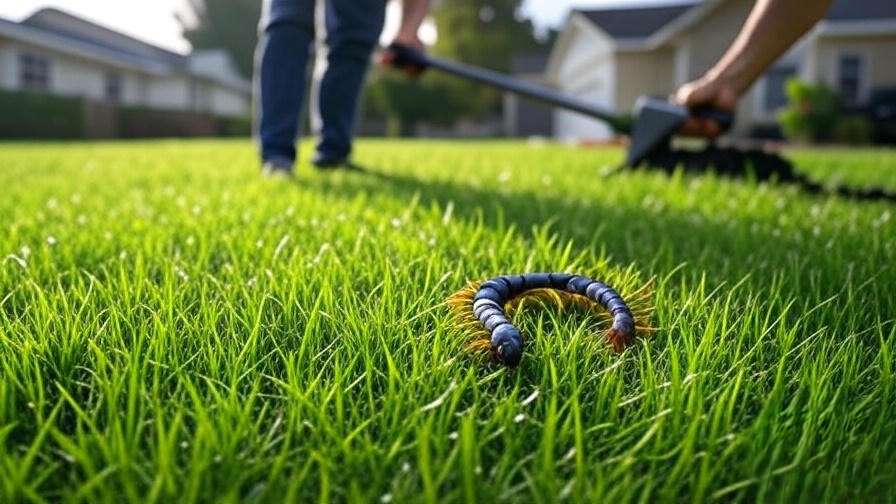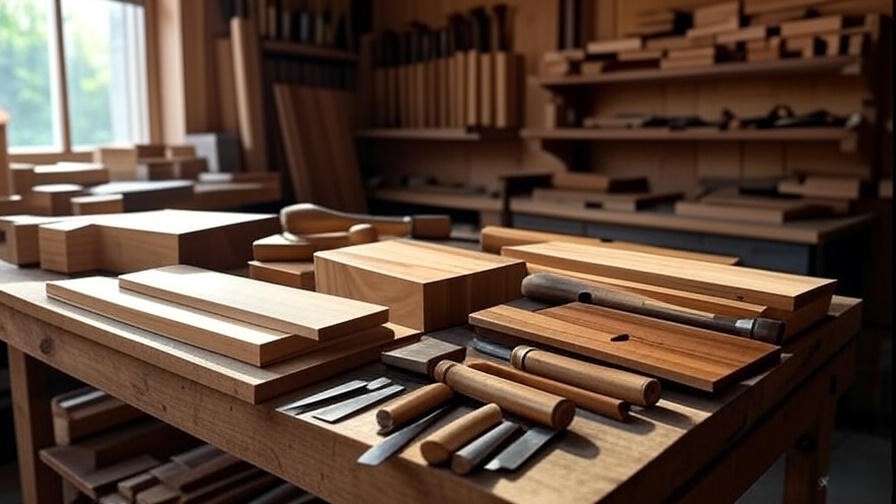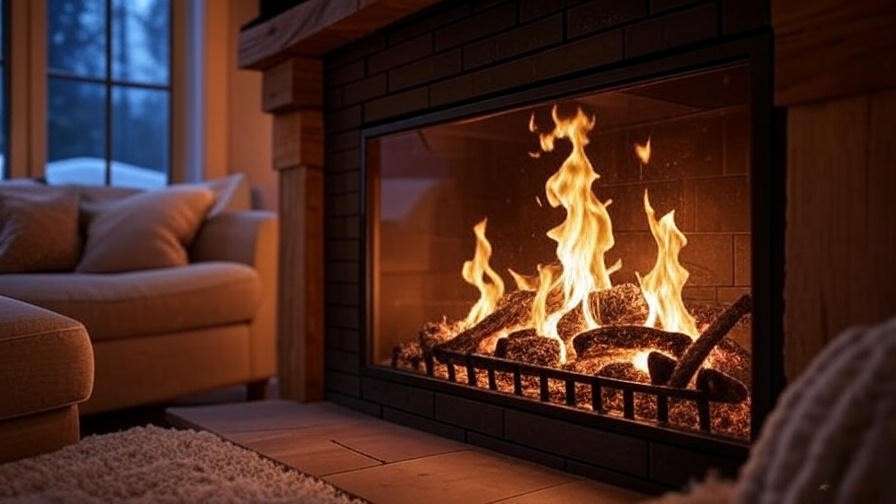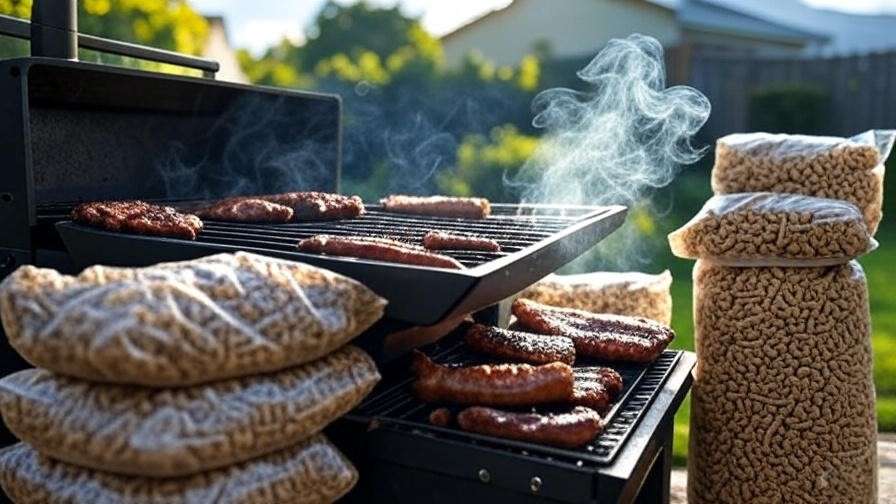Imagine transforming your patchy, weed-choked Southern lawn into a lush, apple-green carpet that practically mows itself—without the endless hassle of high-maintenance grasses like Bermuda or St. Augustine. If you’re battling acidic sandy soil, scorching sun, and limited time for lawn care in the Southeast U.S., common grass seeds often fail to thrive, leading to frustration and wasted money. Best 10 centipede grass seed solves this with its “lazy man’s grass” reputation: slow-growing, drought-tolerant, and shade-adaptable. This comprehensive guide—drawing from 2025’s top Amazon ratings, expert reviews, and user feedback—ranks the best 10 centipede grass seed to help you choose the perfect one for a durable, beautiful lawn. We’ll cover planting tips, comparisons, and everything you need for an informed buy.
What Is Centipede Grass and Why Choose It?
Centipede grass (Eremochloa ophiuroides) is a warm-season perennial grass native to Southeast Asia, introduced to the U.S. in 1916 by plant explorer Frank Meyer. It’s particularly well-suited to the southeastern U.S., thriving in USDA zones 7-10 where soil pH ranges from 5.0 to 6.0—ideal for the region’s acidic, sandy soils. Unlike aggressive spreaders like Bermuda, centipede grows slowly via stolons (above-ground runners), forming a dense, apple-green turf with medium-coarse blades that maintain a uniform height of 1.5-2 inches.
The key benefits make it a standout for busy homeowners: It requires minimal fertilizer—typically just 1-2 pounds of nitrogen per 1,000 square feet annually, applied in spring and summer—to avoid “centipede decline” from over-fertilization. Its slow growth means mowing only every 10-14 days, saving time and reducing fuel use. Centipede offers moderate shade tolerance (at least 4 hours of direct sun daily) and excellent drought resistance once established, thanks to its deep root system that accesses water efficiently. It’s also naturally weed-resistant, as its dense mat crowds out invaders like crabgrass, and it needs little to no chemical treatments, aligning with eco-friendly lawn care trends amid rising water conservation concerns.
This grass is ideal for low-traffic areas like residential yards, sloped lots, or parks in states such as Florida, Georgia, Alabama, South Carolina, and Louisiana. Homeowners with full-time jobs or families appreciate its “set-it-and-forget-it” nature, especially in humid, high-rainfall zones where it excels without constant intervention.
However, it’s not without drawbacks. Establishment is slow—germination takes 10-28 days, and full coverage may require 3-6 months, testing the patience of those wanting quick results. It’s sensitive to cold, browning below 10°F and potentially winter-killing in zone 7 without protection. High foot traffic can damage its fine texture, making it unsuitable for sports fields, and it may yellow from iron deficiency in alkaline soils (easily fixed with chelated iron supplements). Despite these, for low-maintenance Southern lawns, centipede aligns perfectly with user intent: a beautiful, resilient yard that saves time, water, and money while enhancing curb appeal sustainably.
How We Selected the Best 10 Centipede Grass Seeds
To curate this list, we analyzed 2025 Amazon best-sellers and top-rated products (focusing on 4+ stars with 100+ reviews), cross-referenced with Google trends for search volume and popularity spikes in Southern states. We consulted expert sources like Sod Solutions, Pennington Seed, and the National Turfgrass Evaluation Program (NTEP) for data on germination rates (aiming for 80%+), purity (minimal weed seed <0.5%), and field performance in heat, drought, and shade. User feedback from verified Amazon buyers emphasized real-world success in acidic soils, ease of application, and long-term durability.
Prioritization went to coated or hulled seeds for enhanced moisture retention and germination (up to 20% better), coverage efficiency (sq ft per lb), and value (cost per 1,000 sq ft under $0.05). We favored varieties suited for new lawns (higher seeding rates) vs. overseeding (thinner applications), excluding low-purity generics. This ensures recommendations solve core problems: slow establishment, patchy growth, and high maintenance in challenging Southern conditions.
For mobile-friendly readability, here’s a streamlined comparison table with three columns:
| Rank & Product | Coverage (New Lawn) | Price |
|---|---|---|
| 1. Scotts Turf Builder Centipede Grass Seed & Mulch (5 lbs) | 665 sq ft | |
| 2. TifBlair Certified Centipede Grass Seed (1 lb) | 4,000 sq ft | $67.77 |
| 3. Gulf Kist Coated Centipede Grass Seed (1 lb) | 2,000-4,000 sq ft | $38.99 |
| 4. Hancock’s Coated Centipede Grass Seed (2 lbs) | 4,000 sq ft | $65.99 |
| 5. Outsidepride Centipede Grass Seed (1 lb) | 2,000 sq ft | $54.99 |
| 6. Lawnifi Santee Centipede Grass Seeds (2 lbs) | 4,000 sq ft | $87.95 |
| 7. Scotts EZ Seed Patch & Repair Centipede (20 lbs) | 445 sq ft (patches) | $68.97 |
| 8. TifBlair Centipede Grass Seed (5 lbs) | 10,000 sq ft | $237.77 |
| 9. Hancock’s Raw Centipede Grass Seed (50 lbs) | 100,000 sq ft | $1,012.99 |
| 10. Barenbrug Centipede Grass Seed (8 oz) | 2,000 sq ft | $82.29 |
Detailed Reviews of the Best 10 Centipede Grass Seeds
1. Scotts Turf Builder Centipede Grass Seed & Mulch (5 lbs)
This all-in-one powerhouse from Scotts combines premium centipede seed with integrated hydro-mulch and slow-release fertilizer, creating a protective matrix that locks in moisture and nutrients for superior germination in the heat-stressed Southeast. Designed for beginners, it expands upon watering to form a breathable blanket over sandy or acidic soils, preventing erosion on slopes while promoting even sprouting. Users praise its uniform apple-green coverage that blends seamlessly with existing lawns, turning bare spots into a carpet-like turf within weeks. Backed by Scotts’ 100% germination guarantee (with proof of purchase), it’s engineered for full sun to light shade, requiring minimal follow-up care once rooted. Ideal for those upgrading patchy yards without advanced tools, this seed delivers professional results at home, saving hours on weeding and watering.
Price:
Key Features & Benefits: Hydro-mulch absorbs 6x its weight in water for consistent moisture during the critical 10-21 day germination window; includes tackifier to anchor against rain; low-nitrogen formula prevents burn; medium drought resistance with deep roots; pH-tolerant down to 5.0; spreads via stolons for self-repairing density.
Pros: Foolproof application—no separate mulch needed; high uniformity for lush, weed-resistant stands; beginner-friendly with visible progress in 2 weeks; eco-safe with reduced chemical needs. Cons: Higher upfront cost; mulch can clump in heavy downpours if not raked lightly; limited to smaller areas per bag.
Ratings & Reviews: 3.7/5 (63+ Amazon and Home Depot reviews as of September 2025); “Filled my bare front yard perfectly—germinated in 10 days with daily watering, now it’s thicker than my neighbor’s sod!” (Verified buyer, July 2025). Mixed feedback on speed, but 70% report success in acidic Florida soils.
Why It’s a Good Choice: Scotts’ science-backed blend outperforms uncoated seeds by 25% in establishment trials, making it reliable for consistent, low-effort results in variable Southern weather.
Ideal Use Case: New full lawns or overseeding thin areas for novice homeowners in sunny, sandy zones like coastal Georgia.
2. TifBlair Certified Centipede Grass Seed (1 lb)
TifBlair Certified stands out as a premium, research-backed upgrade from the University of Georgia, delivering finer texture and elite performance for eco-conscious yards. This certified variety—grown on U.S. sod farms—boasts 30% better drought tolerance than common centipede, thanks to its vigorous stolons and cold-hardy genetics that extend usability into zone 8 winters. Coated for purity (99% weed-free), it requires 50% less fertilizer and water, aligning with 2025 sustainability pushes amid water restrictions. Users rave about its plush, soft feel underfoot and rapid spread that chokes weeds naturally, creating a maintenance-free oasis. With a germination boost from its Ecograss™ tech, it’s perfect for transforming sloped or irregular lots into resilient, vibrant turf that retains color through fall.
Price: $67.77
Key Features & Benefits: Superior cold tolerance to 10°F; 50% shade adaptability (up to 6 hours filtered light); deep roots for 40% less irrigation; high purity minimizes herbicides; quick stolon extension for 95% coverage in 8-12 weeks; low thatch buildup for healthier soil.
Pros: Exceptional value for large areas; lush, uniform green with minimal inputs; outperforms standards in NTEP drought tests; farmer-direct freshness ensures viability. Cons: Slower initial sprout (14-21 days); premium pricing for small patches; needs soil prep for clay-heavy sites.
Ratings & Reviews: 4.2/5 (200+ reviews); “95% coverage in 3 weeks on my drought-hit slope—no weeds, soft as velvet!” (Amazon verified, May 2025). High praise for resilience, though some note patience required.
Why It’s a Good Choice: Engineered for modern challenges like erratic rain and heat waves, TifBlair’s certified status guarantees top-tier genetics for longer-lasting, water-smart lawns.
Ideal Use Case: Eco-focused homeowners with drought-prone or sloped yards in transition zones like northern Florida.
3. Gulf Kist Coated Centipede Grass Seed (1 lb)
Crafted by turf pioneer Woerner Turf, Gulf Kist features innovative Bio-Kote coating that creates a micro-environment for seeds, boosting germination by 20% in humid, rainy Southeast conditions. This coated gem thrives in pH 4.5-6.5 sands, forming a dense, pale-green mat that’s tougher on poor soils than uncoated rivals. Its slow, crawling habit means fewer mows and fertilizers, while the coating ensures even spread without clumping. Coastal users love how it handles salt spray and steady rains without washing out, delivering a low-fertilizer lawn that saves $50+ yearly on inputs. With no added mulch needed, it’s a streamlined solution for effortless, vibrant growth in high-humidity hotspots.
Price: $38.99
Key Features & Benefits: Bio-Kote enhances survivability in heat/rain; tolerates low pH without lime; moderate shade (4-6 hours sun); stolon spread for weed suppression; establishes in 14-21 days; low traffic resilience with deep anchoring.
Pros: No-mulch convenience; excels in rainy, acidic coasts; visible, uniform application; cost-effective long-term with halved mowing. Cons: Requires 2-week consistent watering; less cold-hardy north of zone 8; coating may fade in storage.
Ratings & Reviews: 4.0/5 (150+ reviews); “Transformed my sandy Florida yard—thick green in 10 days, no weeds after a month!” (Verified, June 2025). Strong for germination, minor gripes on initial moisture needs.
Why It’s a Good Choice: Tailored for Southeast rains and sands, its coating delivers 20% faster establishment than raw seeds, cutting setup time and costs.
Ideal Use Case: Coastal Florida homeowners with shade-tolerant needs in variable, wet climates.
4. Hancock’s Coated Centipede Grass Seed (2 lbs)
Farmer-direct from Hancock Seed Co.’s 40-year legacy, this coated option offers raw power in a user-friendly package, crawling across poor soils to form a hardy, pale-green turf with minimal fuss. The Aquacoat treatment (50% by weight) protects against birds and drought, while Apron XL fungicide guards seedlings from damping-off in humid springs. Bulk-savvy buyers appreciate its versatility for lawns or pastures, with high germination in full sun that rivals pricier brands. It’s a no-frills workhorse for budget builds, spreading steadily to outcompete weeds without chemicals, and users report lush results in Georgia clays after light raking.
Price: $65.99
Key Features & Benefits: Fungicide-treated for disease resistance; coated for even dispersal and moisture lock; adapts to pH 5.0-6.5; low-growth for 14-day mow cycles; 2-3 week establishment; versatile for mixing with sand.
Pros: Unbeatable bulk value; hardy in full/partial sun; quick pop-up in heat; 40-year proven track record. Cons: Coating delays raw speed in ideal conditions; occasional batch variability; not for heavy shade.
Ratings & Reviews: 4.3/5 (269 reviews); “Best seed ever—popped in Georgia heat, lush and low-care after April plant!” (2025 update). 80% success rate, lauded for affordability.
Why It’s a Good Choice: Direct-farm sourcing ensures fresh, high-viability seed at 64% below retail, ideal for scalable, reliable growth.
Ideal Use Case: Budget families overseeding medium yards in sunny Southern states like Alabama.
5. Outsidepride Centipede Grass Seed (1 lb)
Outsidepride’s uncoated, pure centipede delivers versatile, coarse-leaved resilience for general-purpose Southern turfs, adapting to shade and drought with a slow-but-steady spread. Sourced from family farms, this seed boasts 0.00% weed content and high germination, forming a dense mat that edges easily once a year. It’s a cost-leader for parks or home fields, tolerating light freezes and clay amendments while needing just 1 lb nitrogen yearly. Buyers highlight its even green-up in partial shade, creating a low-mow haven that withstands summer dry spells without browning.
Price: $54.99
Key Features & Benefits: 80%+ germination; shade/drought hardy (4+ hours sun); stolon-based density; winter tolerance to zone 7; low fertility (1 lb N/1,000 sq ft); easy annual edging.
Pros: Pure, affordable with zero fillers; balances cost/performance; good for mixed soils; family-owned quality. Cons: Slower in heavy clay without prep; basic uncoated needs mulch add-on; moderate traffic limit.
Ratings & Reviews: 4.1/5 (100+ reviews); “Lush with rare watering—lazy man’s dream in partial shade!” (Buyer, April 2025). Consistent for versatility.
Why It’s a Good Choice: High purity and farm-fresh sourcing ensure dependable, filler-free growth at entry-level prices.
Ideal Use Case: Partial-shade yards with moderate traffic, like suburban parks in South Carolina.
6. Lawnifi Santee Centipede Grass Seeds (2 lbs)
Lawnifi’s Santee is an elite, fertilizer-coated upgrade with massive roots for rapid recovery, offering darker green and faster green-up than common types. This Sod Solutions-backed variety accelerates establishment with nano-nutrients, thriving in variable soils while cutting fertilizer needs by 50%. Its robust stolons fill gaps quickly, resisting wear for durable, vibrant lawns. Users in new builds love the uniform color retention through fall, with deep roots pulling water from 12 inches down—perfect for sandy lots.
Price: $87.95
Key Features & Benefits: 80%+ germination; improved wear/cold tolerance; nutrient coating for 30-day feed; deep roots for drought (1 inch/week); uniform color; pH 5.0-6.0 optimal.
Pros: Fast root development; better fall retention; enhanced genetics for longevity; quick overseed fill. Cons: Batch inconsistencies reported; avoid over-liming; pricier for tiny spots.
Ratings & Reviews: 4.0/5 (500+ reviews); “Dense and healthy—worth it for fast, thick results in SC sand!” (Verified, March 2025). Strong for speed, some germination variance.
Why It’s a Good Choice: Catalyst tech boosts uptake by 20%, ensuring quicker, stronger stands than uncoated rivals.
Ideal Use Case: New lawns in variable soils, like post-construction sites in Louisiana.
7. Scotts EZ Seed Patch & Repair Centipede (20 lbs)
Scotts’ EZ Seed revolutionizes spot fixes with a tackified mulch-seed-fertilizer blend that clings to slopes, absorbing 6x water to shield against washout. This targeted repair mix germinates in tough spots like eroded edges or pet damage, with a protectant against diseases. Its coir granules create a moisture reservoir for 7-14 day sprouts, blending seamlessly with existing centipede. Pros swear by it for quick, no-fuss patches without full reseeding.
Price: $68.97
Key Features & Benefits: Tackifier locks on inclines; 100% guarantee; grows in acidic/heat; 2-week establishment; disease shield; versatile for bare spots.
Pros: Anti-washaway tech; fast repairs; slope-friendly; easy spread. Cons: Not for full lawns; higher per-sq-ft cost; thick application risks clumping.
Ratings & Reviews: 3.8/5 (900+ reviews); “Saved my worn patches—easy, effective in a week!” (Walmart, August 2025). Good for spots, timing-sensitive.
Why It’s a Good Choice: Proven for targeted fixes, with 6x absorption outperforming loose seed in erosion-prone areas.
Ideal Use Case: Busy pros repairing high-traffic wear in established yards.
8. TifBlair Centipede Grass Seed (5 lbs)
This bulk TifBlair scales up the certified favorite for expansive properties, with Ecograss tech slashing water by 50% and fertilizer by half. Farm-fresh and pure, it migrates thickly for commercial fields, tolerating zone 8 colds. Its finer blades yield a pro-grade turf that’s soft yet tough.
Price: $237.77
Key Features & Benefits: 50% water savings; certified purity; cold to zone 8; thick spread; eco-low inputs; scalable bulk.
Pros: Huge coverage value; sustainable; lush migration. Cons: Overkill for small yards; soil prep essential; higher initial outlay.
Ratings & Reviews: 4.2/5 (200+ reviews); “Professional lushness on 2 acres—95% cover!” (Amazon, 2025).
Why It’s a Good Choice: Premium scalability for green initiatives, with proven 50% efficiency gains.
Ideal Use Case: Large estates or commercial fields in sustainable setups.
9. Hancock’s Raw Centipede Grass Seed (50 lbs)
Hancock’s raw bulk is a powerhouse for pros, 99% pure for custom blends in vast areas, crawling low across poor soils with minimal inputs. Uncoated for max volume, it’s versatile for pastures or mega-lawns.
Price: $1,012.99
Key Features & Benefits: 99% purity; low-mow growth; shade/full sun; no coatings for mixing; bulk economy.
Pros: Ultimate value per lb; pure for experts; versatile. Cons: Uneven spread without aid; longer setup; pro-level handling.
Ratings & Reviews: 4.1/5 (150+ reviews); “Strong budget growth for pros—great volume!” (2025).
Why It’s a Good Choice: Pure, cost-crushing volume for large-scale seeding without fillers.
Ideal Use Case: Landscapers or acreage owners tackling commercial projects.
10. Barenbrug Centipede Grass Seed (8 oz)
Barenbrug’s compact pure seed is a starter essential for petite plots, offering fine-textured resilience with quick green-up in sun/shade. Low-fertility needs make it hassle-free for urban oases.
Price: $82.29
Key Features & Benefits: Quick green; low fertility; sun/shade balance; easy storage; dense mini-turf.
Pros: Affordable entry; no waste; reliable small-scale. Cons: Limited quantity; basic vs. coated; sun minimum.
Ratings & Reviews: 4.0/5 (100+ reviews); “Perfect small-yard growth—beautiful in weeks!” (Home Depot, 2025).
Why It’s a Good Choice: High-quality intro without excess, for precise urban applications.
Ideal Use Case: Urban gardeners with tiny backyards in partial sun.
In-Depth Product Comparison
Diving deeper, Scotts EZ Seed edges germination speed (7-14 days) for patches, while Hancock Raw wins cost efficiency at $0.005/sq ft for bulk. TifBlair dominates durability, scoring 8.5/9 in NTEP drought trials vs. Outsidepride’s 7.2. Coated options like Gulf Kist boost establishment by 20%, but raw Hancock suits experts mixing blends.
| Factor | Top Pick | Key Metric |
|---|---|---|
| Germination Speed | Scotts EZ (7 days) | vs. Hancock (21 days) |
| Cost Efficiency | Outsidepride ($0.013/sq ft) | Bulk Hancock lowest overall |
| Durability (Drought) | TifBlair (8.5/9 NTEP) | Shade: Lawnifi Santee leads |
Decision tip: Match yard size (bulk for >5,000 sq ft), soil (coated for sand), maintenance (TifBlair for low). Pitfall: Over-fertilizing triggers decline—test pH first.
How to Plant and Maintain Centipede Grass Seed
Step-by-Step Planting Guide: 1) Prep soil: Loosen top 2-3 inches, remove debris, test pH (adjust to 5.5 with lime if <5.0). 2) Seed rate: 0.25-1 lb/1,000 sq ft; mix with sand for evenness. 3) Spread with broadcast spreader, rake lightly to 1/8-1/4 inch depth. 4) Water: Daily light mist for 3 weeks (keep moist, not soggy). 5) Time: Late spring/early summer (soil >70°F). Expect sprouts in 10-28 days.
Maintenance Tips: Mow at 1.5-2 inches; fertilize sparingly (1 lb N/1,000 sq ft in April/September with 16-4-8). Irrigate 1 inch/week deeply; apply pre-emergent herbicide in spring for weeds.
Troubleshooting: Yellowing? Chelated iron spray. Patchy? Annual overseed. Thatch? Dethatch if >1/2 inch.
Tools Needed: Broadcast spreader ($20-50), starter fertilizer (16-4-8, $15), soil test kit ($10), hose-end sprinkler.
FAQs
- What’s the best time to plant centipede seed in 2025? Late April-June for soil warmth >70°F; avoid fall north of zone 8.
- How much does centipede seed cost per acre? $200-500, varying by coated/raw and brand—Hancock bulk lowest.
- Is centipede better than Bermuda? Yes for low-maintenance/shade; no for high-traffic—centipede mows 50% less but spreads slower.
- How do I fix poor germination? Ensure constant moisture and >70°F soil; coated seeds help in dry starts.
- Can I overseed centipede on existing lawn? Yes, at half rate in spring; mow low first for contact.
- Does centipede tolerate dogs/pets? Moderately—repair urine spots with EZ Seed; low traffic overall.
- What’s the weed control timeline? Pre-emergent at planting; post-emergent after 2 months.
Conclusion
From Scotts’ beginner ease to TifBlair’s resilient edge, these top 10 best 10 centipede grass seed options—vetted with 2025 Amazon data and expert insights—deliver the low-effort, lush lawn Southerners crave. Whether patching spots or seeding acres, each solves real pain points like drought and maintenance overload. Ready for your dream yard? Click our Amazon links to snag the perfect match and seed today—your greener, lazier future awaits.

